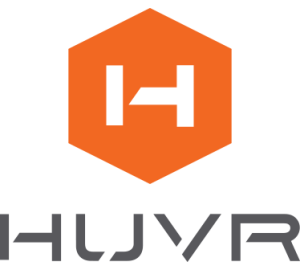Blog · 5 MIN READ
Robotics: The Challenges of Advancement
Posted on May 05
Robotics: The Challenges of Advancement
(Note: This is a write up based on the panel discussion featuring Matt Alberts, manager of strategic partnerships, HUVR, and Quinn Holub, business development manager, Gecko Robotics, Inc.)
15 years ago, had someone said you could inspect a volatile asset with a robotic drone easier than with a person’s eyes, you probably would have been shocked. No doubt you would have fired off an email on your Blackberry. Maybe you’d have watched a documentary about robots, delivered on DVD via Netflix. You may have even posted about it on Facebook, which was just opened to non-students for the first time. Heck, you may have said something on that new website Twitter. How does one even use that site? Do you Twitter at people?
The point is, we’ve come a long way in a short time, but not without difficulty. Where once collecting enough data could be a challenge, we are now faced with too much data that requires managing. The interconnection of systems has in turn caused challenges with formatting and security. Let’s look at how each new challenge can be overcome.
Data management
We may be entering into an information golden age, but the fact is we are collecting more information per inspection than ever before. So much that it must be actively managed to avoid overwhelming inspectors and analysts.
The goal of any inspector is to hand over a report to allow an informed decision, regardless of what is being inspected. To be able to do so, the report must contain the right data in a context that gives it meaning.
For this to happen, the inspection data must be taken from multiple sources and aggregated to provide actionable insights. This has given birth to new digital tooling that pulls in the data and returns it with the right context and formatting, which allows users to understand the single truth of the asset–and we’re pretty sure we know which tool is the best. (Hint: It’s HUVR)
Systemic Discretion
There was a period when it seemed like every system, industrial inspection, had its own file type. This is where the tired joke about someone not knowing how to open a PDF comes from—it used to be exclusive to a few apps. Now, basically anything that reads text can open a PDF.
This is due to standardization, of course. Macs can open PC files, Excel can open any .csv file, etc. As we continue to use new devices, there is a temptation to create a certain type of file that is proprietary to their tool. Overall, it’s bad for the industry when this happens. Users are moving toward an open-source, standardized normal and away from being locked into a single vendor because of false silos put up by non-standard formats.
Of course, if you want a system that can handle any file type—one that is vendor agnostic—we can recommend a pretty good one.
Security
Of course, open-source does not mean open doors, where anyone is free to come and rifle through your data. The whole point is that YOU own your data. Where once, files were stored on easily-lost and forgotten external drives, today, the cloud is rapidly becoming the norm.
The cloud has many benefits over conventional drives. When data is on the cloud, it is accessible from anywhere, as long as you have the proper login. Long gone are the days of handing a client a thumb drive full of information. It is typically more secure, because there are multiple points along the route to stop an intrusion (or an accidental deletion). It does not require expensive—and energy-wasting—servers to be maintained by every single operation.
Robotic inspection tools generate data that is “digital native.” It is born and exists as digital information. Moving it in-and-out of cyberspace, even if it’s to a drive, is a waste of effort. Funnily enough, we can also recommend a inspection data management system that keeps all your inspection data sorted and in a single, secure repository: an inspection data management system, of sorts.
Legacy Thinking
Overcoming resistance to new technology, like robotic inspection devices, is an old tale. Certainly, when the bow-and-arrow was invented, there were folks who sneered and said a fire-hardened spear or sling was good enough. However, bows have obvious advantages that drove an evolution in warfare.
And that’s how you defeat the very human desire to maintain the status quo: by showing the efficiency possible with new tools. The greater safety. The massive amounts of data, but pared down to the right information to provide the truth about an asset condition.
The juice is definitely worth the squeeze, but learning new things is always a bit of a headache. However, once learned, the benefits are tremendous. For instance, HUVR improves maintenance efficiency by up to 40%. You probably guessed we were going to say something like that.
Conclusion: The Juice from the Squeeze
Robotics are not magic, no matter how beneficial. To leverage their true potential, some old ways of thinking must be set aside, and that’s never easy. Matt Alberts suggested explaining the “why” of digitization rather than the “how.” This blog post has attempted to do that on a surface level. There are challenges to any sea change, but ultimately we must go where the currents are flowing. That’s a metaphor for listening to our clients; they are the ones whose lead must be followed. Their pain points today become tomorrow’s solutions.


